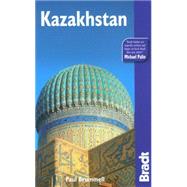
The New copy of this book will include any supplemental materials advertised. Please check the title of the book to determine if it should include any access cards, study guides, lab manuals, CDs, etc.
The Used, Rental and eBook copies of this book are not guaranteed to include any supplemental materials. Typically, only the book itself is included. This is true even if the title states it includes any access cards, study guides, lab manuals, CDs, etc.
In a speech in early 1954 the Soviet leader Nikita Khrushchev launched into an attack on the state of Soviet agriculture. He identified a major shortage of grain which, he argued, could not be addressed simply by more intensive cultivation in the traditional grain producing areas in Russia. Rather, the production of grain in new lands would be required. A plan was drawn up to plough 40m ha of virgin steppe in Kazakhstan and western Siberia, and put this to grain production.
The inauguration of the Virgin Lands Campaign in 1954 was marked with great zeal. Hundreds of thousands of people were brought into the Virgin Lands from across the Soviet Union. The first train into Akmola bringing volunteers for the new scheme arrived from Almaty on 2 March 1954; the first train from Moscow arrived three days later. While many of the students and soldiers enlisted to help with the campaign stayed only temporarily, the Virgin Lands Campaign had an important effect on the demographic composition of northern Kazakhstan, greatly boosting the numbers of Slavonic peoples, especially Russians and Ukrainians. The area of land ploughed in 1954 was 19m ha, well above the target of 13m. An additional 14m ha was ploughed in the following year. The total crop area in Kazakhstan increased by more than three times. The harvest of 1956 appeared to vindicate the success of the programme, with more than half of the 125m tonnes of grain produced in the USSR coming from the new lands. Grain production in Kazakhstan rose from an average of less than 4m tonnes a year to more than 14m.
Excerpted from Kazakhstan by Paul Brummell
All rights reserved by the original copyright owners. Excerpts are provided for display purposes only and may not be reproduced, reprinted or distributed without the written permission of the publisher.